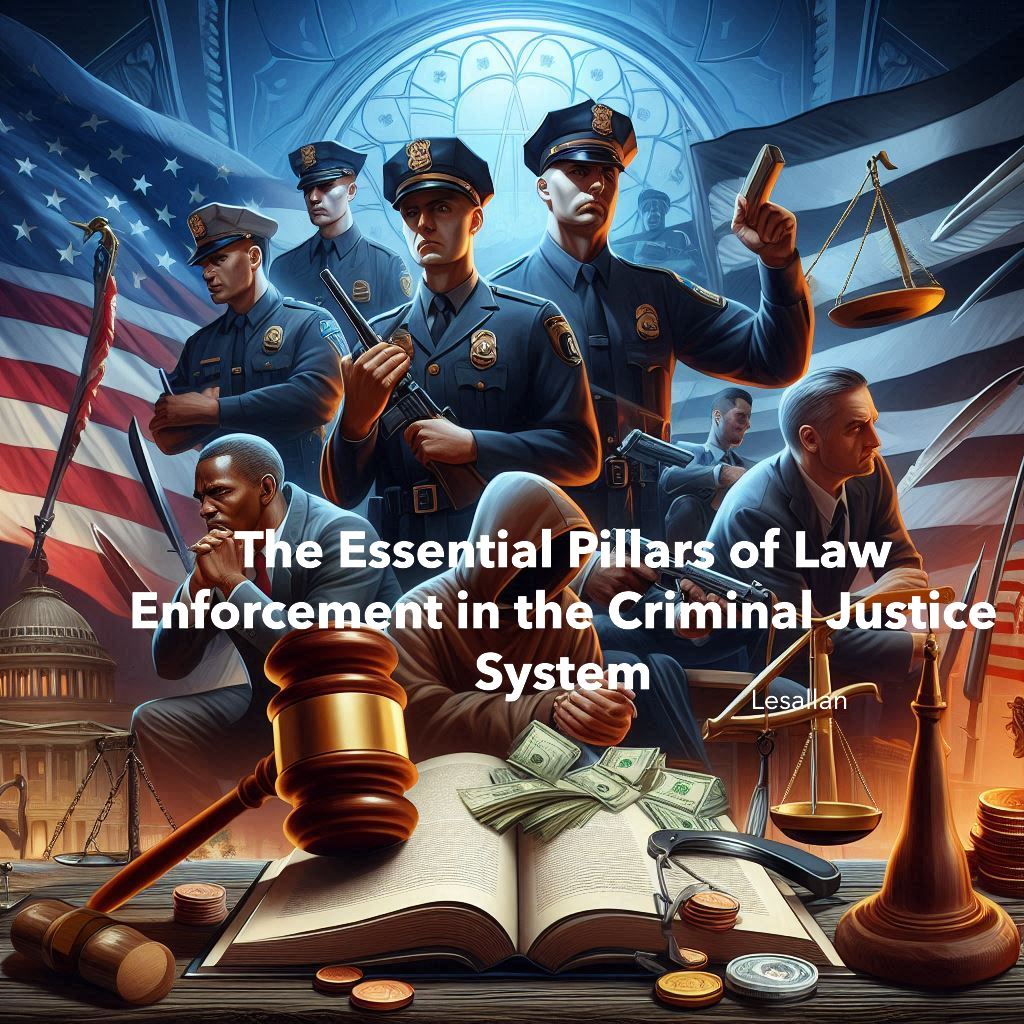
The Essential Pillars of Law Enforcement in the Criminal Justice System
Lesallan – July 1, 2024
Law enforcement agencies are the backbone of the criminal justice system, a network of institutions that uphold social control, deter and mitigate crime, and sanction those who violate laws with criminal penalties and rehabilitation efforts. The spectrum of law enforcement is vast, encompassing a range of roles from patrol officers to specialized detectives, each integral to the system’s overall efficacy.
At the federal level, agencies like the FBI and DEA handle complex, multi-jurisdictional matters that transcend local boundaries, while local police departments address community-specific issues. Despite the scale of operation, the core mission remains consistent: to serve and protect the populace.
The administration of justice is a delicate balance, and law enforcement officers are trained to navigate this terrain with a blend of authority and discretion. Probation and corrections officers, though not always in the limelight, are crucial in supervising offenders and facilitating their reintegration into society.
Preventing corruption within these ranks is paramount. Rigorous training, strict codes of conduct, and internal affairs divisions are just a few mechanisms in place to maintain integrity. The use of force is another area under constant scrutiny; officers are equipped with guidelines to ensure that any force applied is proportional to the threat encountered.
Undercover operations and the use of confidential informants remain contentious, yet they are vital tools in penetrating criminal organizations and gathering intelligence. These methods, while effective, are governed by stringent regulations to prevent abuse and protect the rights of all involved.
As we delve into the complexities of law enforcement, it’s essential to recognize the human element. Officers are individuals who face unique challenges and carry the weight of immense responsibility. Their dedication is the linchpin that keeps the wheels of justice turning.
For a deeper understanding of these dynamics, Chapters 5-7 of “CJ: Realities and Challenges” by Masters (2021) provide comprehensive insights into the multifaceted nature of law enforcement and its critical role in our society.
In conclusion, law enforcement is not just a collection of individuals in uniform; it’s a symbol of order and a guardian of peace. As we reflect on the significance of these roles, let’s acknowledge the dedication and sacrifice that define the noble policing profession. The health of our criminal justice system hinges on the integrity and effectiveness of law enforcement, and it’s our collective responsibility to support and hold accountable this vital institution.
In Christ,
Lesallan – July 1, 2024


